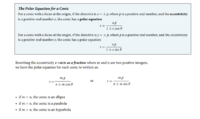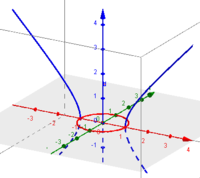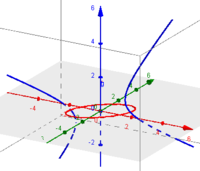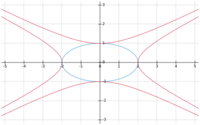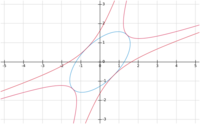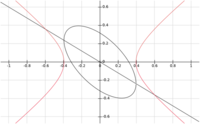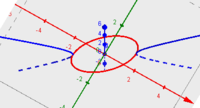A circle (x^2+y^2)=r has imaginary (hyperbola) solutions for x or y > r. So do ellipses. But for ellipses, the imaginary hyperbolas are fixed to the orientation of the major and minor axes of the ellipse, and so are independent of the origin and orientation of the coordinate frame.
But a circle does not have major/minor axes; the orientation of the imaginary hyperbolas outside r are instead fixed to the choice of coordinate frame. Is this correct or am I missing something? It just seems counter-intuitive as the concept of a circle is something that is radially symmetric, and all of its properties should be choice of coordinates. If circles are a unique quadratic in which imaginary solutions depend on choice of reference frame, has this never caused a problem in math or physics?
But a circle does not have major/minor axes; the orientation of the imaginary hyperbolas outside r are instead fixed to the choice of coordinate frame. Is this correct or am I missing something? It just seems counter-intuitive as the concept of a circle is something that is radially symmetric, and all of its properties should be choice of coordinates. If circles are a unique quadratic in which imaginary solutions depend on choice of reference frame, has this never caused a problem in math or physics?

